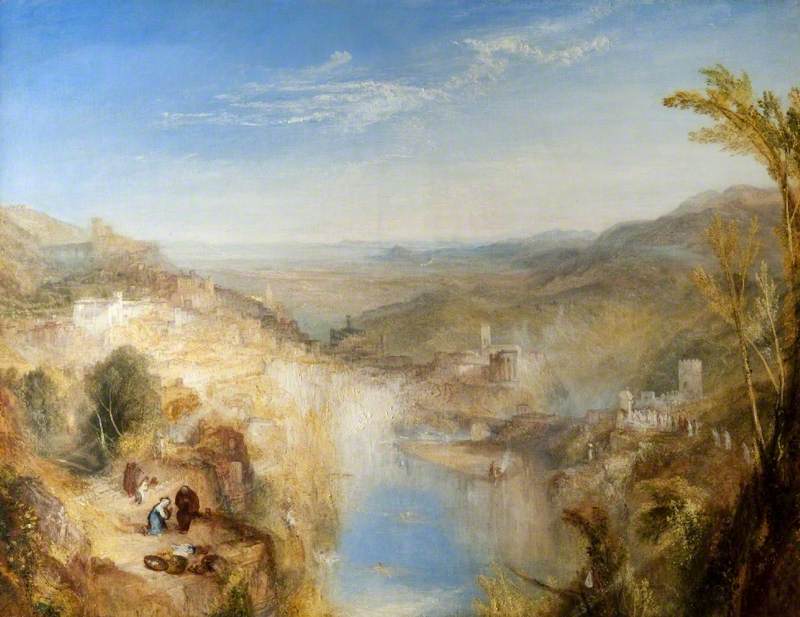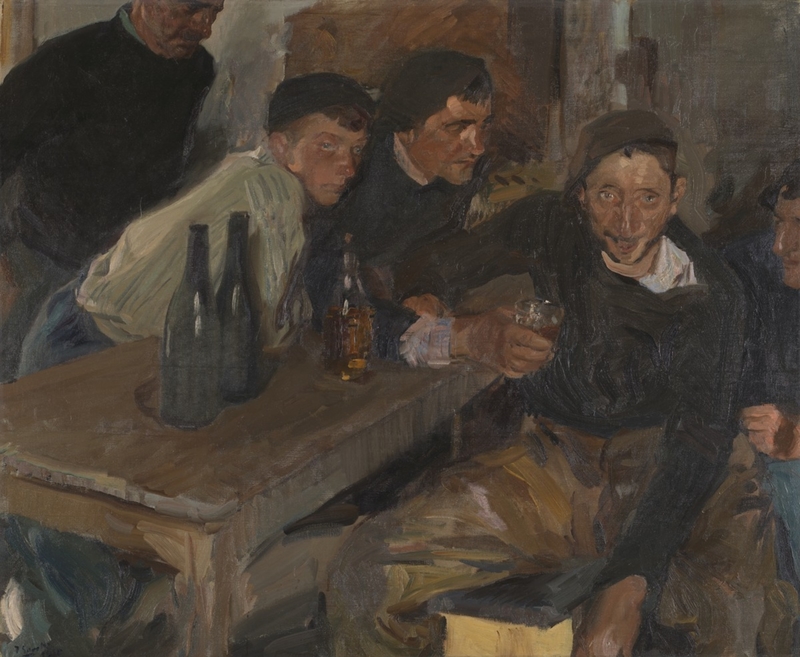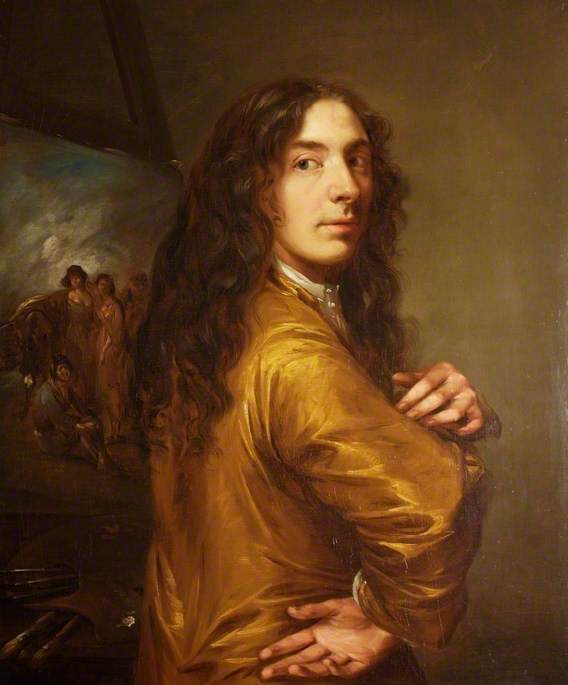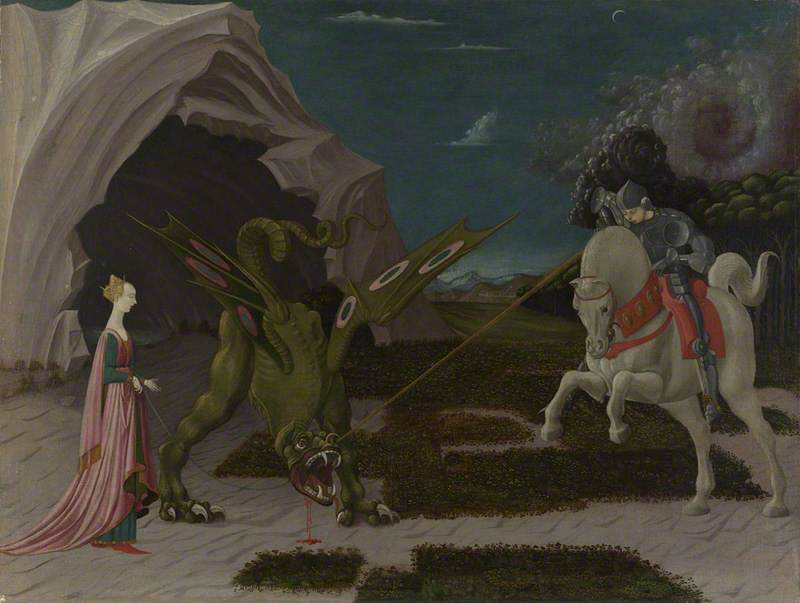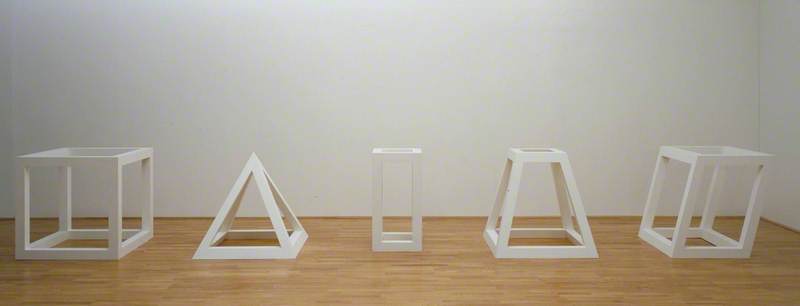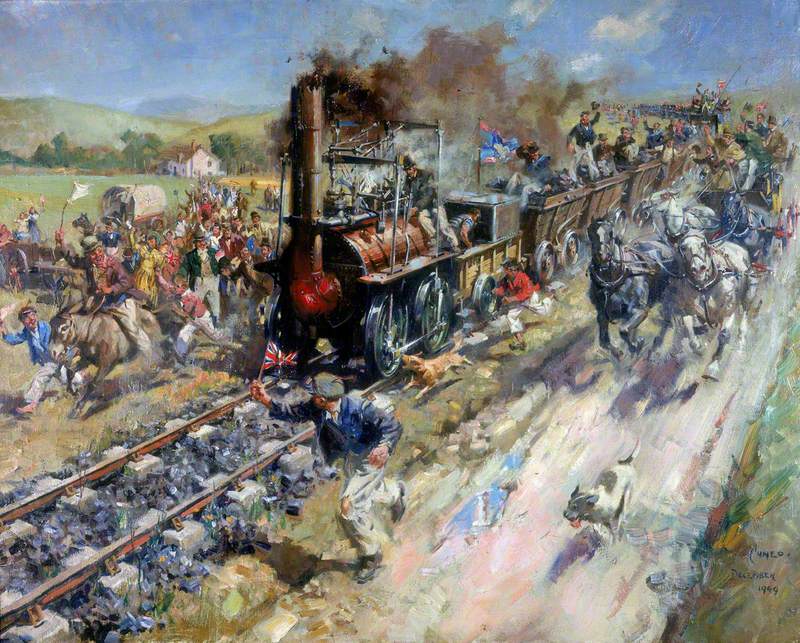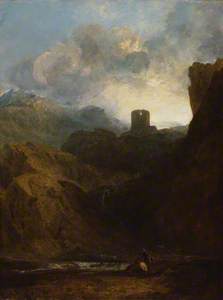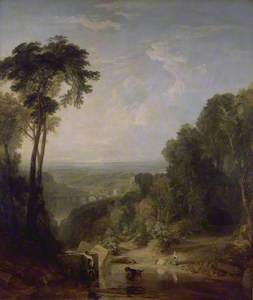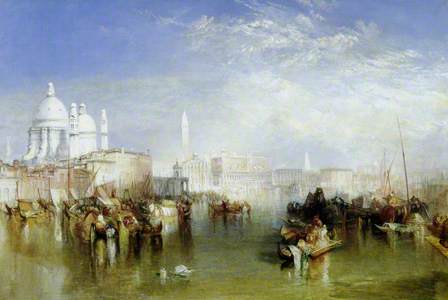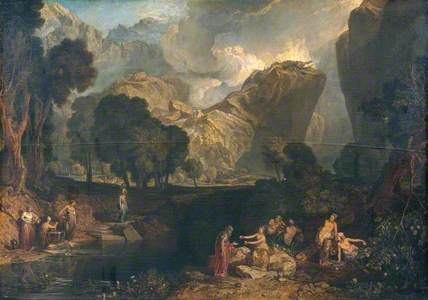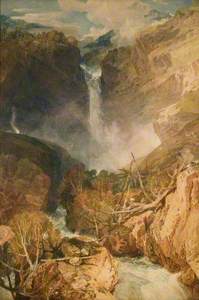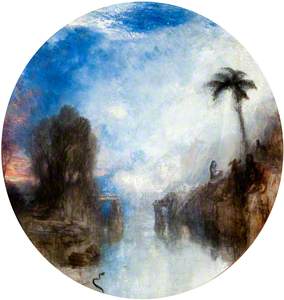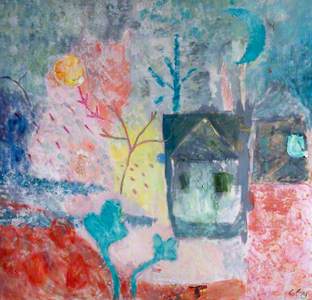Turner was the greatest English landscape painter, and one of the most successful and influential.

Image credit: The National Gallery, London
The Fighting Temeraire tugged to her Last Berth to be broken up, 1838 1839
Joseph Mallord William Turner (1775–1851)
The National Gallery, LondonHis most distinctive works, such as The Fighting Temeraire tugged to her Last Berth to be broken up, 1838 and Rain, Steam and Speed – The Great Western Railway, are still much-loved and admired.

Image credit: The National Gallery, London
Rain, Steam, and Speed - The Great Western Railway 1844
Joseph Mallord William Turner (1775–1851)
The National Gallery, LondonOf humble origins and with an eccentric personality, his extraordinary talent and ambition took him to the top of his profession, in which he combined a love of nature with a belief in the ability of landscape painting to carry serious and noble meanings. The full extent of his work can be seen in the Tate.
Joseph Mallord William Turner, known as William but now called J. M. W. to distinguish him from another artist of the same name, was the son of a barber. He was born in the heart of commercial London, in Maiden Lane, near Covent Garden market, probably in early May 1775. His father encouraged his early artistic talent, but his mother's illness caused him to stay with his uncle in Middlesex, and it was there and with other relatives that he started to draw from nature.
In 1789, at the age of 14, he enrolled at the Royal Academy schools; a year later his first exhibit at the Royal Academy was hung, a watercolour of the Bishop's Palace, Lambeth. In this period, views of picturesque scenery, recording both ancient ruins and modern townscapes, were immensely popular, such as Blackfriars Cross, Hereford. Numerous illustrated books and sets of engravings provided much work for artists, including Turner.

Image credit: Gallery Oldham
Blackfriars Cross, Hereford (A Monument) 1790s
Joseph Mallord William Turner (1775–1851)
Gallery OldhamThe 1790s, therefore, were taken up by his extensive tours of England and Wales, filling sketchbooks with beautiful drawings and watercolour studies, and fulfilling commissions for publishers and local gentry and aristocrats. The artistic establishment quickly recognised his youthful talent and elected him an Associate of the Royal Academy in 1799 and a Royal Academician in 1802. He remained loyal to the Royal Academy all his life, being appointed as a council member in 1803 and serving as Professor of Perspective from 1807 to 1838.
Turner's own skills and his awareness of other artists' work grew as he visited his patrons' country house collections – there was no national gallery at this time. Alongside his study of the picturesque British landscape, he absorbed the lessons of the idealised classical landscapes of the French seventeenth-century artist Claude Lorrain and his many followers.
In 1800 Turner exhibited his first historical landscape, The Fifth Plague of Egypt, one of a series of great historical and biblical subjects that continued to include Snow Storm: Hannibal and his Army Crossing the Alps of 1812. This, like much of his work of the early 1800s, was inspired by his own first European journey across the Alps to Italy in 1802.

Image credit: Tate
Snow Storm: Hannibal and his Army Crossing the Alps exhibited 1812
Joseph Mallord William Turner (1775–1851)
TateTurner's work was now not just topographical but also classical and romantic. It was based on the intense study of nature, its landscape, vegetation and weather, but was also intended to involve the viewer in the experience, as well as to create noble and moving subjects that would stand comparison with the old masters. Turner was beginning to see himself as part of that tradition.
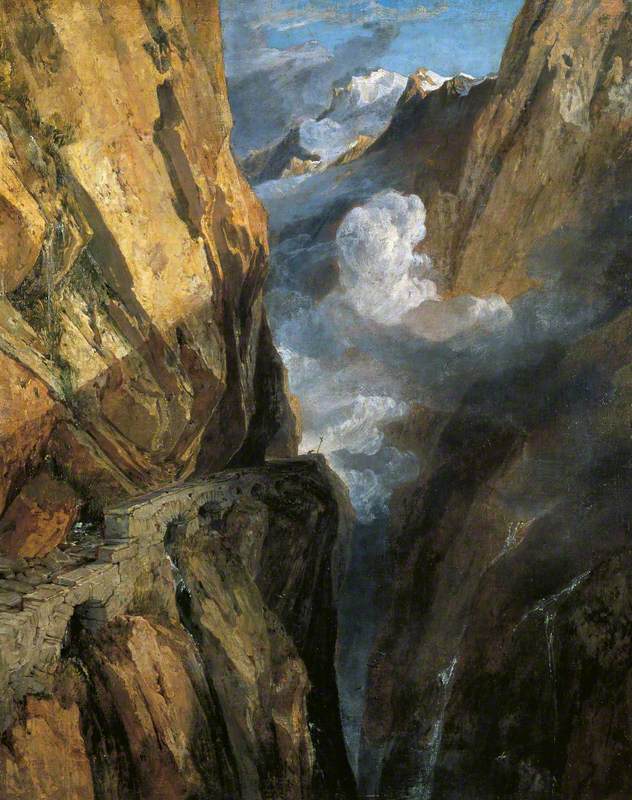
Image credit: Birmingham Museums Trust
The Pass of Saint Gotthard, Switzerland 1803–1804
Joseph Mallord William Turner (1775–1851)
Birmingham Museums TrustForeign travel was increasingly important to Turner at this time: Switzerland for its dramatic and romantic scenery, as in The Pass of St Gotthard, and Italy for its long classical and Renaissance history and culture, for instance, Rome, from the Vatican.

Image credit: Tate
Joseph Mallord William Turner (1775–1851)
TateThe varied scenery of French rivers, dramatic alpine mountains and gorges, and the sun-soaked plains of Rome were painted in their own right and as the context for historical, biblical, mythological and contemporary events. In all these it is colour, light and atmosphere that dominate, held together by Turner's striking sense of design and composition.

Image credit: University of Liverpool
The Eruption of the Soufrière Mountains in the Island of St Vincent, 30 April 1812 1815
Joseph Mallord William Turner (1775–1851)
University of LiverpoolTurner's bequest of his studio contents to the nation on his death in 1851 revealed in his watercolour studies and unfinished oils the full extent of his mastery of abstract form. His admirer, the critic John Ruskin, who called him the 'founder of modern art', understood that even his most abstract studies, especially those in watercolour, showed that everything Turner painted was based on nature.
Andrew Greg, National Inventory Research Project, University of Glasgow
